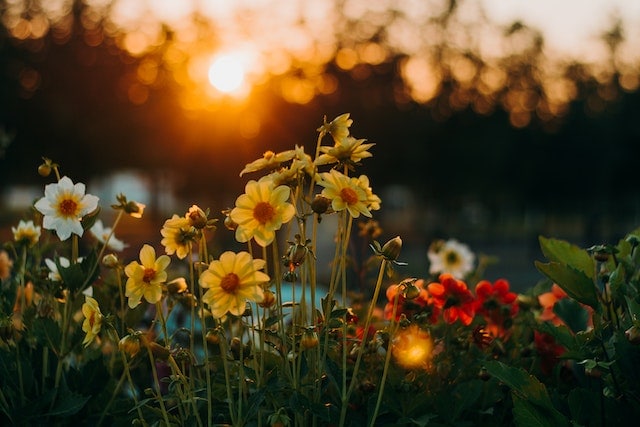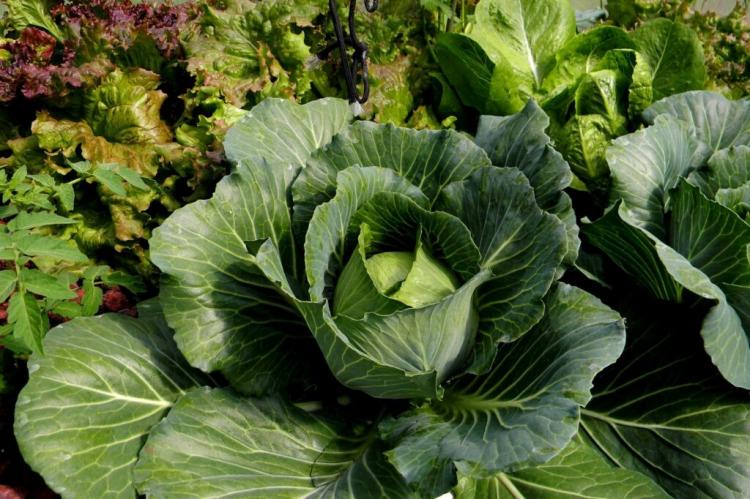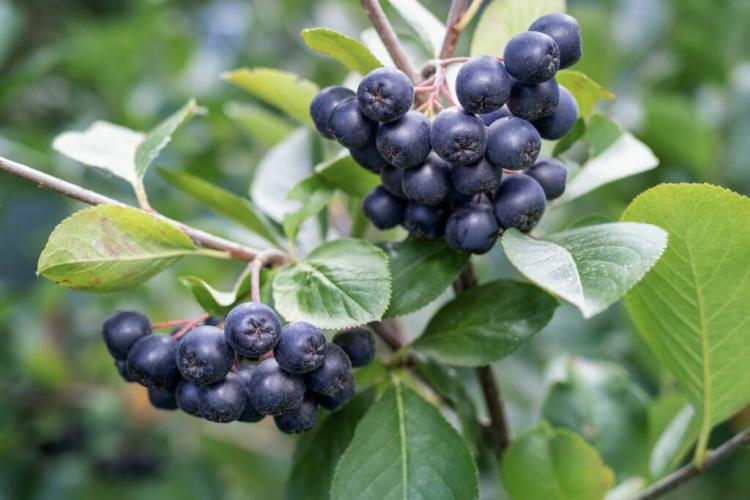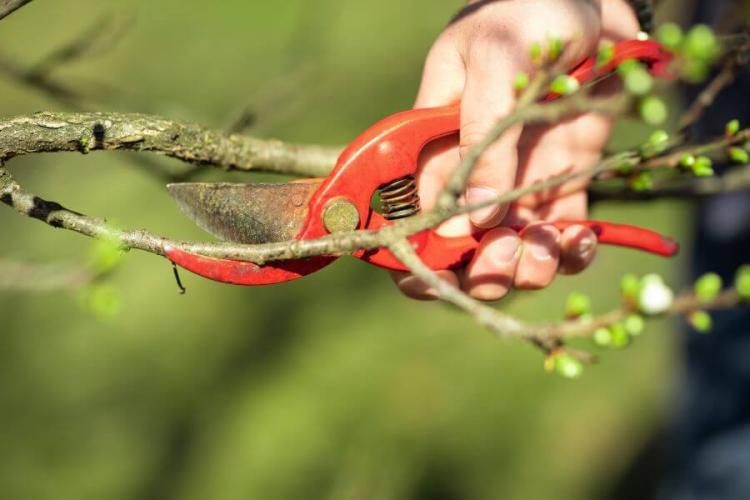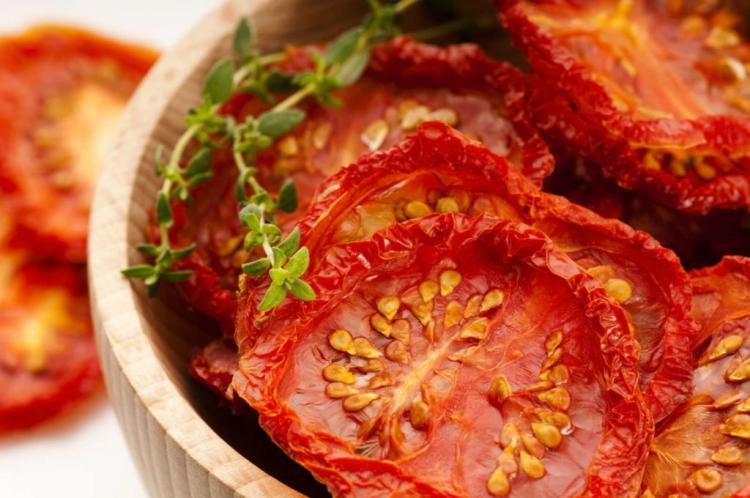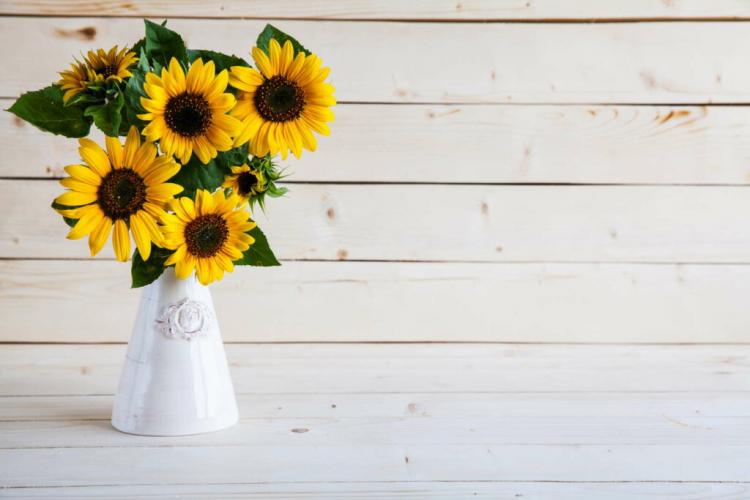Flowers that Start With E
Are you looking for a way to bring some extra beauty and color into your garden or home? If so, then flowers that start with the letter E are perfect for sprucing up any space. From exotic birds of paradise to common daisies there is sure to be an ‘E’ flower variety out there for everyone! In this blog post, we’ll take a look at 50 different beautiful blooms that all have names beginning with ‘E’. Get ready to fill your home and garden with gorgeous colors and fragrances as you learn more about these exquisite blossoms!
-
Echinops
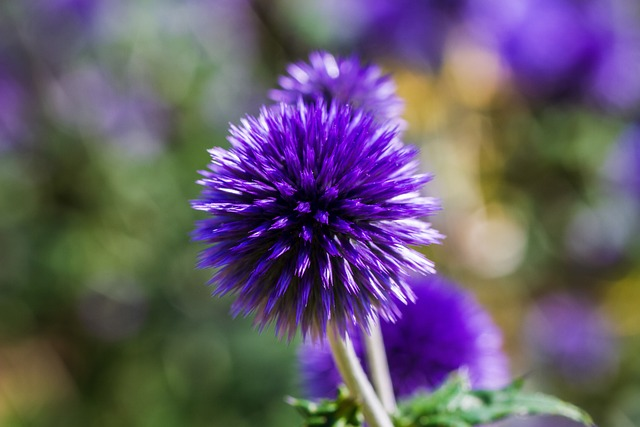
Table of Contents
Also known as globe thistle, it’s a perennial flower with tall stems and spiky leaves that can reach up to five feet in height. It has deep blue, almost violet, flowers that bloom from July to September.
-
Edelweiss
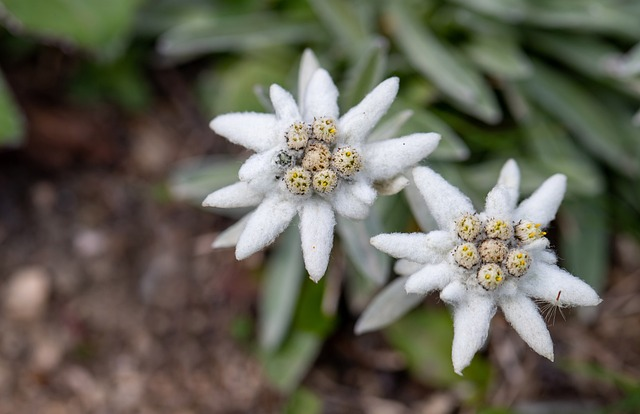
This iconic Alpine flower is a symbol of Austria and Switzerland. It has small white petals with a puff of yellow stamens in the center. Edelweiss grows at high altitudes in the mountains and is known for its beauty and resilience.
-
Euphorbia-Corollata
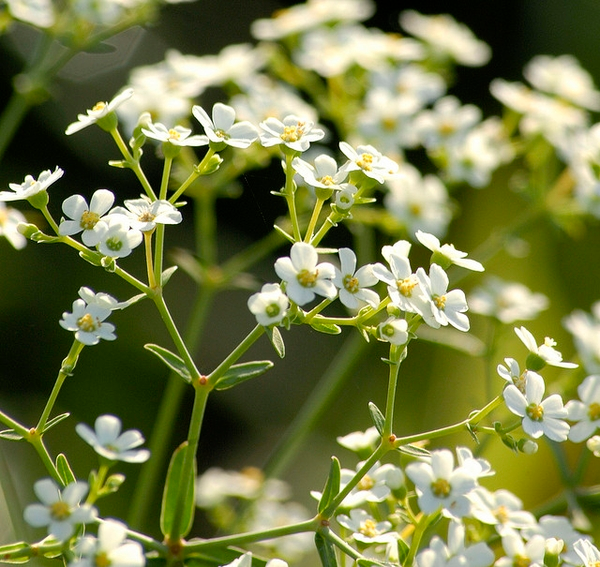
This is a species of flowering plant in the Euphorbia family. It is native to parts of North America and can be found growing in moist, acidic soils along streams, rivers, wetlands, and marshes. Flowers are small yellowish-green with five petals arranged in a star pattern around a single central stigma. Its leaves are narrow and lance-shaped.
You might like dipladenia winter care
-
Eryngium
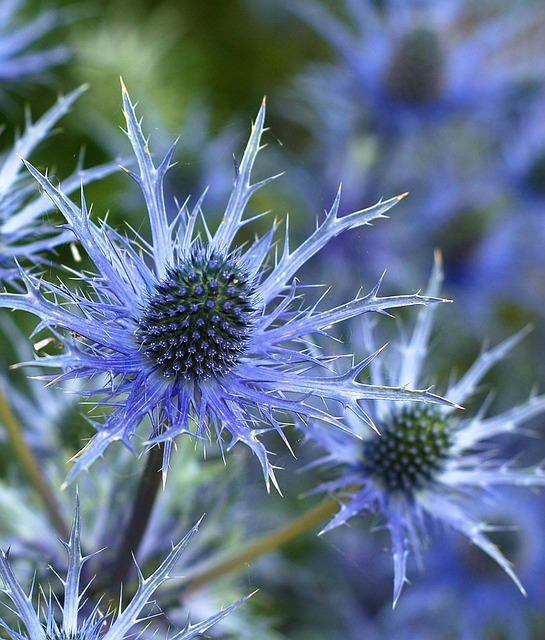
Also known as sea holly, this plant is a member of the carrot family. Its unique spiky flowers range in color from light blue to white, and its leaves are silvery-green. Eryngium is native to Mediterranean countries, where it grows near the shoreline and in rocky coastal cliffs.
-
Eriostemon
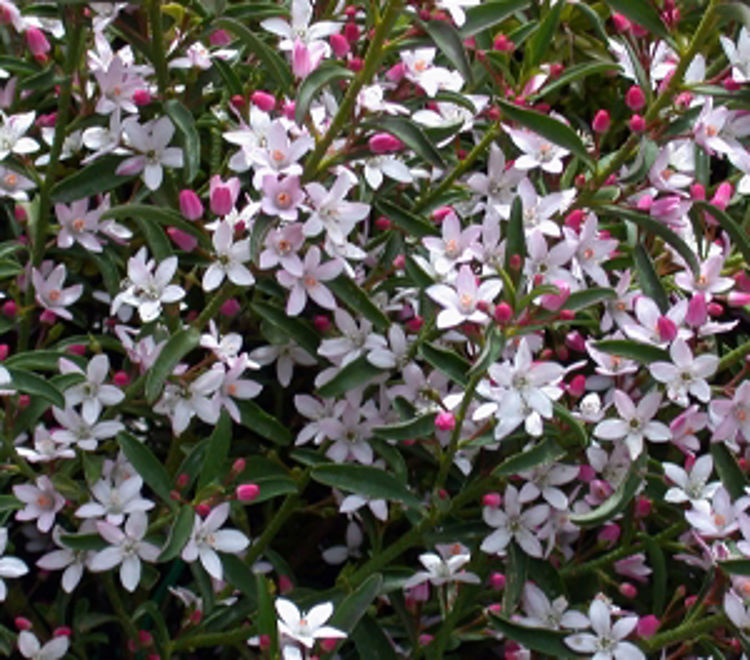
This Australian native shrub has small, bell-shaped flowers that come in shades of white, pink and purple. It prefers moist soil and full sun, and it is drought tolerant once established.
You May Also Like Flowers That Mean Goodbye
-
Epidendrum

A genus of epiphytic orchids, epidendrum has over 1,200 species. Its flowers come in a variety of shapes and colors, including white, yellow, pink, and red.
-
Evening Primose
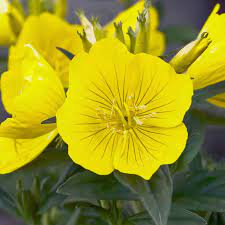
A low-growing, herbaceous plant with yellow flowers and oval leaves, evening primrose is native to North America. Its blossoms open in the evening and close in the morning, hence its name. This flower is a favorite of pollinators like bees, butterflies, and hummingbirds.
-
Eminia Blue Dicks flower
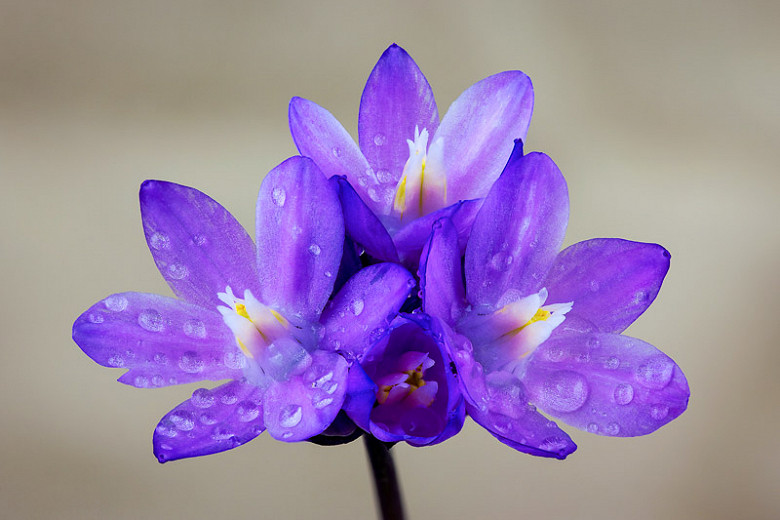
A member of the iris family, Eminia blue dicks flowers are evergreen perennials with long, grassy leaves. They have lavender-blue flowers with yellow centers, and they bloom from late spring to early summer.
-
Esperanza

Also known as yellow bells, Esperanza is a tropical shrub that grows in the desert. Its bright yellow flowers are trumpet-shaped and bloom in the spring and summer. The flowers attract hummingbirds, bees, and other pollinators.
-
Eustoma Grandiflorum
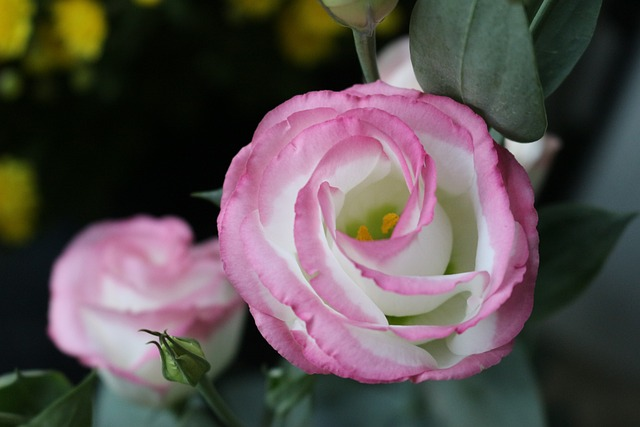
Commonly known as lisianthus, this flower is a species of the gentian family. Its name comes from the Greek word for “beautiful mouth”, and it comes in white, pink, purple, and even blue hues. It blooms from mid-spring to early summer, making it a popular choice for bridal bouquets.
-
Egyptian Starclusters
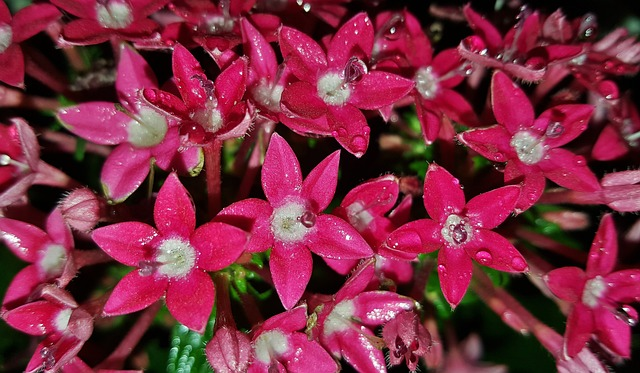
Egyptian starclusters are small annuals with yellow flowers that open up to reveal five petals. They have long, lance-shaped leaves and are native to the Mediterranean region. These flowers make a great addition to any garden, as they attract beneficial insects like butterflies and bees.
-
Egyptian Star flower
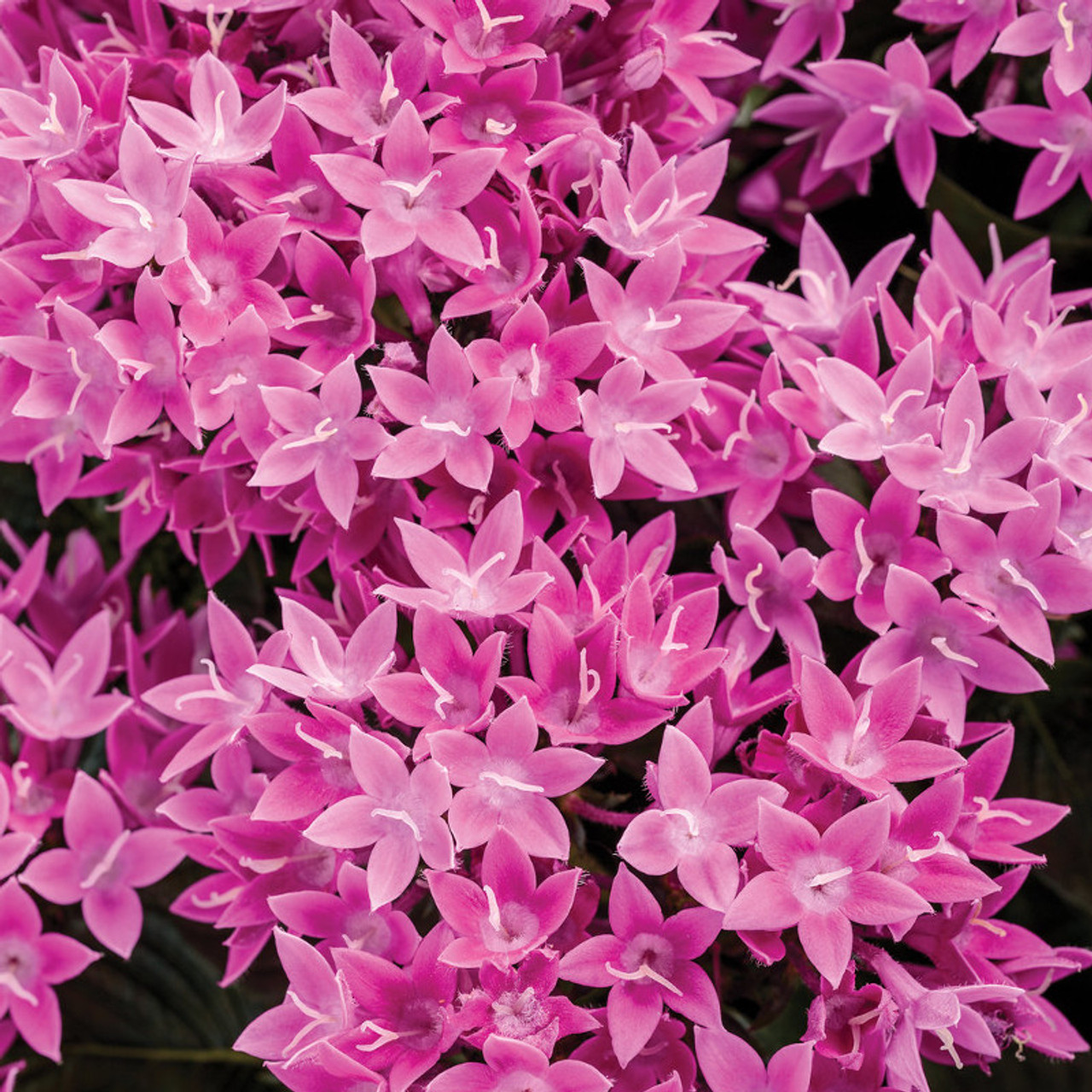
A species of passionflower, the Egyptian starf lower is a tropical climbing vine with large white blooms. Its petals are lightly tinged with pink and yellow, and its sepals are deep violet. This flower blooms in the summer months.
-
Everlasting daisy
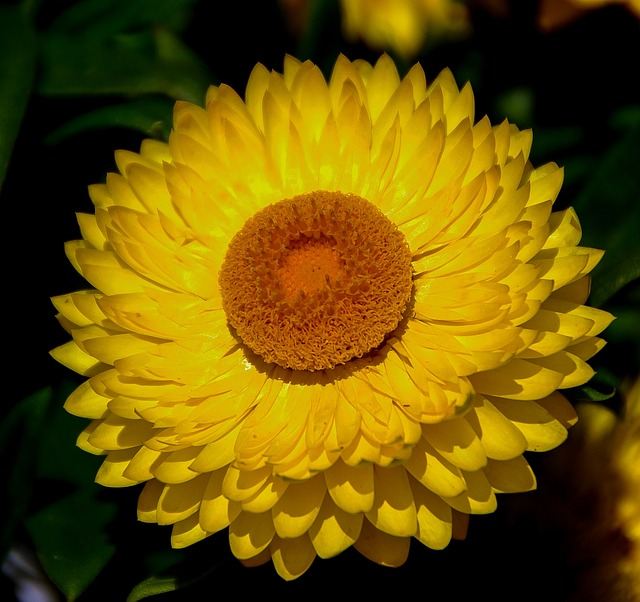
A perennial flower with magenta petals, everlasting daisy is native to South Africa. It grows up to two feet in height and blooms from late spring to early summer. It is drought-tolerant and does well in full sun or partial shade.
-
Eupatorium Purpureum

Eupatorium Purpureum is a species of flowering plant in the Asteraceae family. It is native to parts of eastern North America, including most of the Eastern United States and adjacent Canada. This plant typically grows between 2-5 feet tall and has purple or pinkish flowers with long stems. Leaves are simple, opposite, smooth, and lanceolate in shape.
-
Eliroses
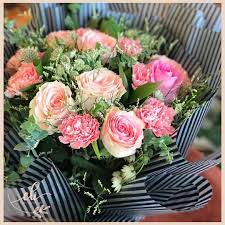
Also known as hellebores, eliroses are a perennial flowering plant with large, purple flowers and glossy leaves. They bloom in the late winter or early spring, and they are prized for their durability and long-lasting blooms.
-
Euphorbias
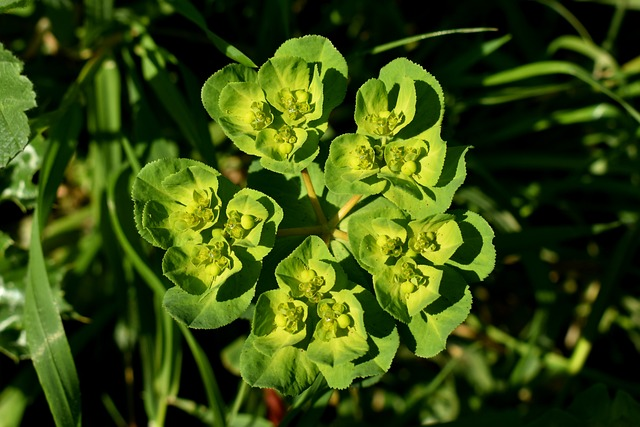
Euphorbias are a genus of flowering plants with hundreds of species. They have small greenish-yellow flowers, and their foliage is often used in flower arrangements. Euphorbias are drought-resistant and can grow in a variety of climates, making them a popular choice for gardeners.
-
Eremurus
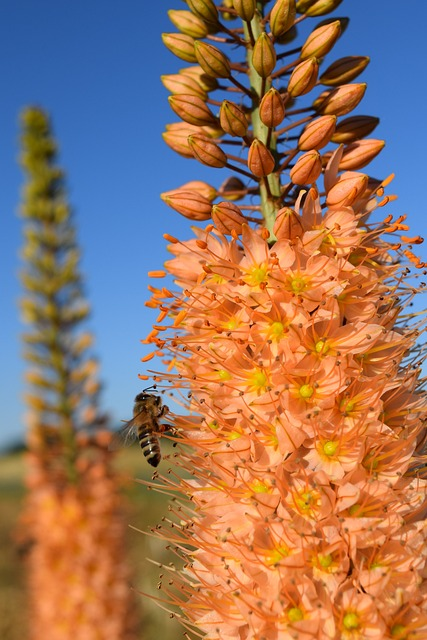
Also called foamflowers, eremurus are perennials native to Eurasia. They have white or pinkish flowers that appear in large clusters, and their foliage is an attractive deep green. Eremurus bloom in the late spring or early summer.
-
Eastern coneflower
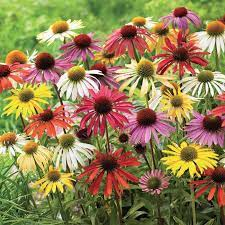
A member of the daisy family, Eastern coneflowers are native to North American woodlands. They have large pink flowers with yellow centers, and they bloom from mid-spring to late summer. Eastern coneflowers are attractive to butterflies and other pollinators.
-
Elderflower
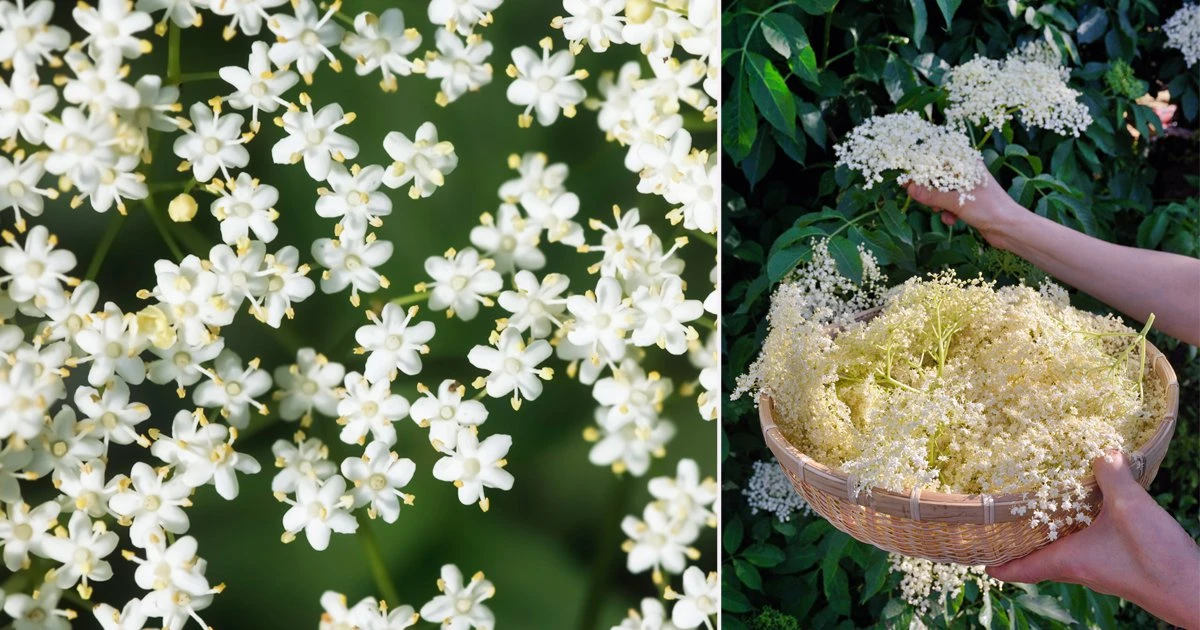
Elderflower is a species of flowering plant in the Adoxaceae family. It is native to parts of Europe, North Africa, and western Asia. This small shrub typically grows between 2-4 feet tall with clustered white flowers that have a sweet scent with notes of citrus. Its leaves are opposite and pinnately compound, deeply veined, with serrated edges. Elderflower is known to have medicinal properties and has been used in herbal remedies to treat colds and flu.
-
Early goldenrod
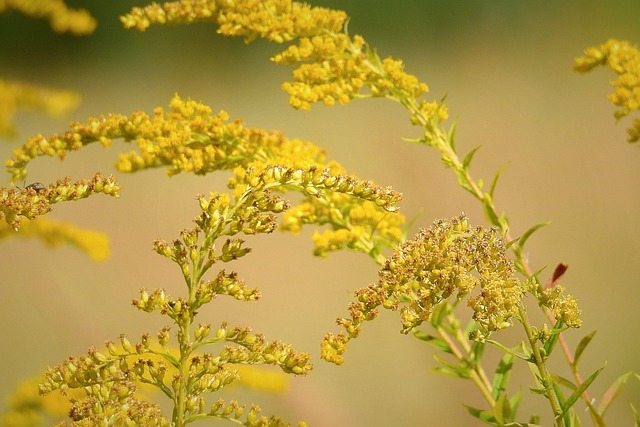
Early goldenrod is a perennial wildflower with bright yellow flowers. It blooms in late summer and early fall, making it a great choice for late-season color in the garden. Early goldenrod is also attractive to pollinators and beneficial insects.
-
Eastern round-leaved violet
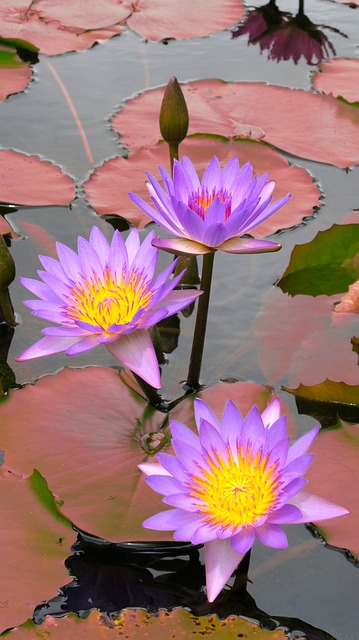
Eastern round-leaved violet is a wildflower native to the eastern United States. It has blue or purple flowers with yellow centers, and its foliage is an attractive. This flower blooms in the Spring.
-
Echinopsis
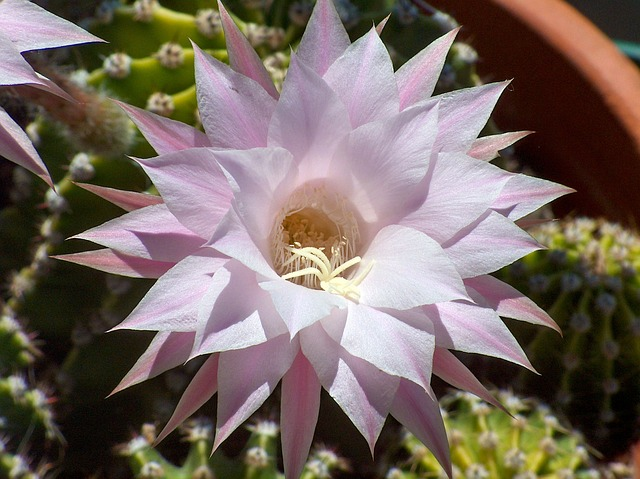
Echinopsis species produce very showy flowers that last only one day. They are originally from South America and grow naturally in Argentina, Peru, and Bolivia.They have bright pink or orange flowers with yellow centers, and they bloom in the summer months. Echinopsis can tolerate a variety of climates and make great houseplants.
-
Elecampane

Elecampane is an herbaceous perennial with large white flowers. Its leaves are lance-shaped and its roots are used in herbal remedies. Elecampane is also commonly referred to as Elfdock or Horse-Heal. Elecampane blooms in the summer months and prefers full sun to partial shade.
-
Ear-leaved Tickseed
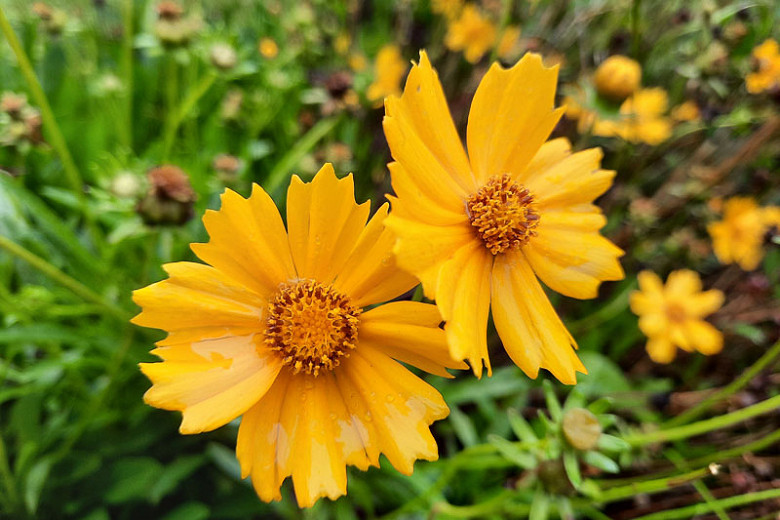
Ear-leaved tickseed is a perennial wildflower native to the eastern United States. It has bright yellow flowers with brown centers, and it blooms from late spring to early summer. The flowers are attractive to butterflies and hummingbirds.
-
Emilia
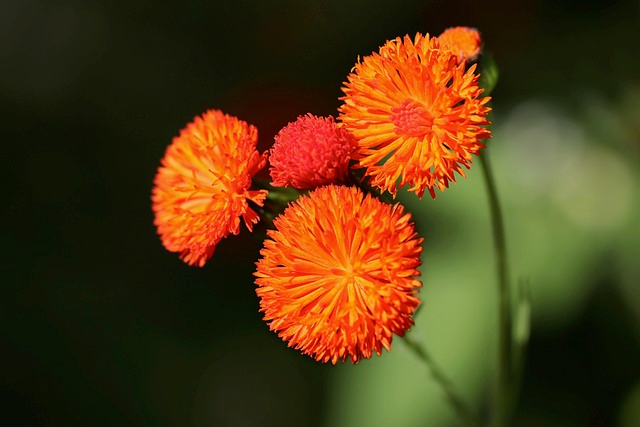
Emilia is an annual flower with pink or white flowers. Its leaves are lance-shaped, and its seeds can be used to make herbal teas. Emilia blooms in the summer months and prefers full sun to light shade.
-
Eryngos
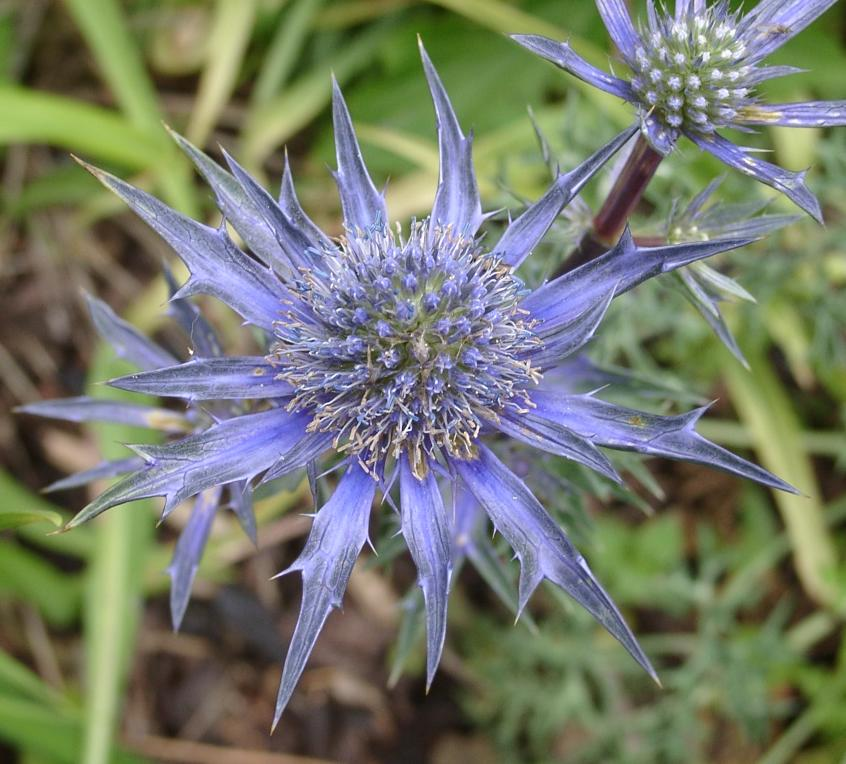
Eryngos are a genus of flowering plants native to Eurasia. They have small white flowers with yellow centers and attractive glossy foliage.
-
Echeveria Elegans
Echeveria elegans is a succulent with rosettes of fleshy leaves and orange, yellow, or pink flowers. It blooms in the summer months and prefers warm temperatures with partial shade.
-
English daisy
English daisy is a perennial wildflower with white or pink flowers. It blooms in the spring months, and its foliage is an attractive deep green. English daisy attracts beneficial insects like bees and butterflies, making it a great choice for pollinator gardens.
-
Echium
Echium is a genus of flowering plants native to the Mediterranean region. They have small blue or purple flowers and attract beneficial insects like bees and butterflies. Echium blooms from spring to fall and can tolerate a variety of climates.
-
Erica flower
Erica flower is a species of flowering plant in the Ericaceae family. It is native to parts of Southern Europe, North Africa and western Asia. This small evergreen shrub typically grows between 0.5-1 meter tall with clusters of white or pink flowers that have a sweet scent. Its leaves are opposite, alternate, simple and small. Erica flower is often used in flower arrangements and can be found growing in alpine meadows, rocky outcrops and heaths.
-
Erigeron-Annuus
Erigeron annuus is an annual wildflower native to North America. It has bright yellow or pink flowers, and it blooms from late spring to early summer. Erigeron annuus is attractive to butterflies and other pollinators.
-
Erigeron-Acer
Erigeron acer is a perennial wildflower native to Europe, Asia, and eastern North America. It has small white flowers with yellow centers, and it blooms from late spring to early summer. Erigeron plants have a bushy appearance with alternate, fern-like leaves and small daisy-like flowers that comes in colors red, pink and white.
-
Eve’s Needle Cactus
Eve’s Needle Cactus is a succulent with tall stems and bright yellow flowers. It blooms in the summer months and can tolerate a variety of climates. Eve’s Needle Cactus makes an attractive houseplant or addition to the garden.
-
Evening Primerose
Evening Primerose is a perennial wildflower native to North America. It has bright yellow flowers that open in the evening and close during the day. Evening Primerose blooms in the summer months and prefers full sun to partial shade.
-
Everlasting flower
Everlasting flower is a perennial wildflower with small white or pink flowers. It blooms in the summer months and prefers full sun to partial shade.
-
Epiphyllum
Epiphyllum is a genus of cacti native to Central and South America. They have large white flowers with yellow centers, and their stems are covered in sharp spines. Epiphyllum blooms in the summer months and prefers warm temperatures with bright light.
-
Eschscholzia
Eschscholzia is a genus of annual wildflowers native to western North America. They have bright orange, yellow, or white flowers and attractive fern-like foliage. Eschscholzia blooms in the summer months and prefers full sun to partial shade.
-
Evolvulus
Evolvulus is a genus of flowering plants native to South America. They have small blue or white flowers and attractive foliage. Evolvulus blooms in the summer months and prefers full sun to partial shade. It is attractive to hummingbirds and other pollinators.
-
English-Bluebell
English bluebell is a bulbous perennial wildflower native to Europe. It has small bell-shaped blue flowers and attractive glossy foliage. English bluebell blooms in the late spring months and prefers partial shade.
-
Eucomis-Comosa
Eucomis comosa, or pineapple lily, is an ornamental perennial with tall stems and clusters of white flowers. It blooms in the summer months and prefers full sun to partial shade. The stems of pineapple lily are topped with a mass of rosettes resembling pineapple fruit.
-
Euryops-Virgineus
Euryops virgineus is a low-growing evergreen shrub native to South Africa. It has small yellow daisy-like flowers, and it blooms from spring to summer. Euryops virgineus prefers full sun to partial shade and is attractive to bees and other pollinators.
-
Erythronium-Pagoda
Erythronium pagoda is a bulbous perennial wildflower native to North America. It has small white or yellow flowers and attractive foliage. Erythronium pagoda blooms in the spring months and prefers partial shade.
-
Epimedium-grandiflorum rose
Epimedium grandiflorum rose is a perennial wildflower native to eastern Asia. It has small pink or white flowers, and it blooms in the spring months.
-
Eupatorium-Fistulosum
Eupatorium fistulosum is a perennial wildflower native to North America. It has small white flowers and attractive foliage. Eupatorium fistulosum blooms in the summer months and prefers full sun to partial shade.
-
Eve’s pin
Eve’s pin is a small annual wildflower native to North America. It has small white or pink flowers with yellow centers, and it blooms in the summer months.
-
Enchanter’s nightshade
Enchanter’s nightshade is a perennial wildflower native to Europe. It has small white or pink flowers, and it blooms in the summer months. Enchanter’s nightshade is attractive to bees and other pollinators.
-
Epimedium-Amber
Epimedium amber is an evergreen perennial wildflower native to Europe. It has small yellow or orange flowers, and it blooms in the spring months.
-
Epimedium-Grandiflorum red
Epimedium grandiflorum red is a perennial wildflower native to central Asia. It has small red or pink flowers, and it blooms in the spring months.
-
Eupatorium-Cannabinum
Eupatorium cannabinum is a perennial wildflower native to North America. It has small pink or white flowers, and it blooms in the summer months.
-
Evergreen-Red
Evergreen red is a hardy evergreen shrub native to eastern Asia. It has small red flowers and attractive foliage. It is attractive to hummingbirds and other pollinators.
Conclusion
This is a comprehensive list of 50 different flowers that begin with the letter “E”. From evolvulus to evergreen red, each flower has its own unique characteristics and preferences when it comes to soil types, light requirements, blooming times, and pollinators. Each one will add beauty and character to any garden or landscape. Hopefully, this list has inspired you to give a few of these gorgeous blooms a try!
You May Also Like Flowers That Start With B
FAQs
What type of soil do most flowers beginning with E prefer?
Most flowers that start with e prefer well-drained, fertile soil. Some may require full sun to partial shade depending on their specific needs.
What types of pollinators are attracted to these flowers?
Most of the flowers that start with E are attractive to bees, butterflies, and hummingbirds. However, each flower may have different preferences when it comes to which pollinators they attract. Be sure to research the specific flowers you are interested in for more information.
When do these flowers typically bloom?
The blooming time for each of the flowers on this list varies. Some may bloom in the spring months, while others may bloom in the summer or fall. Be sure to research the specific flower you are interested in for more information.
